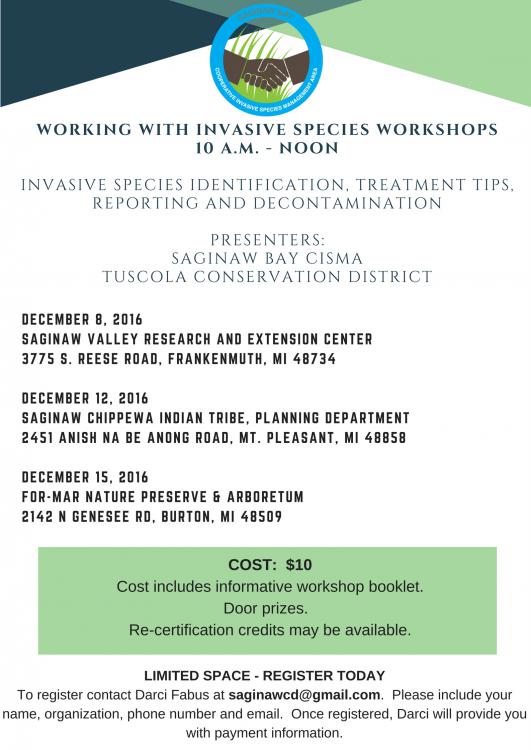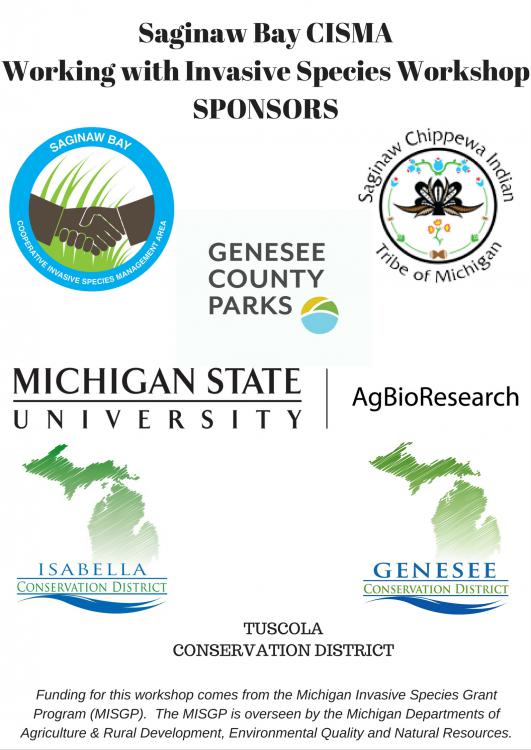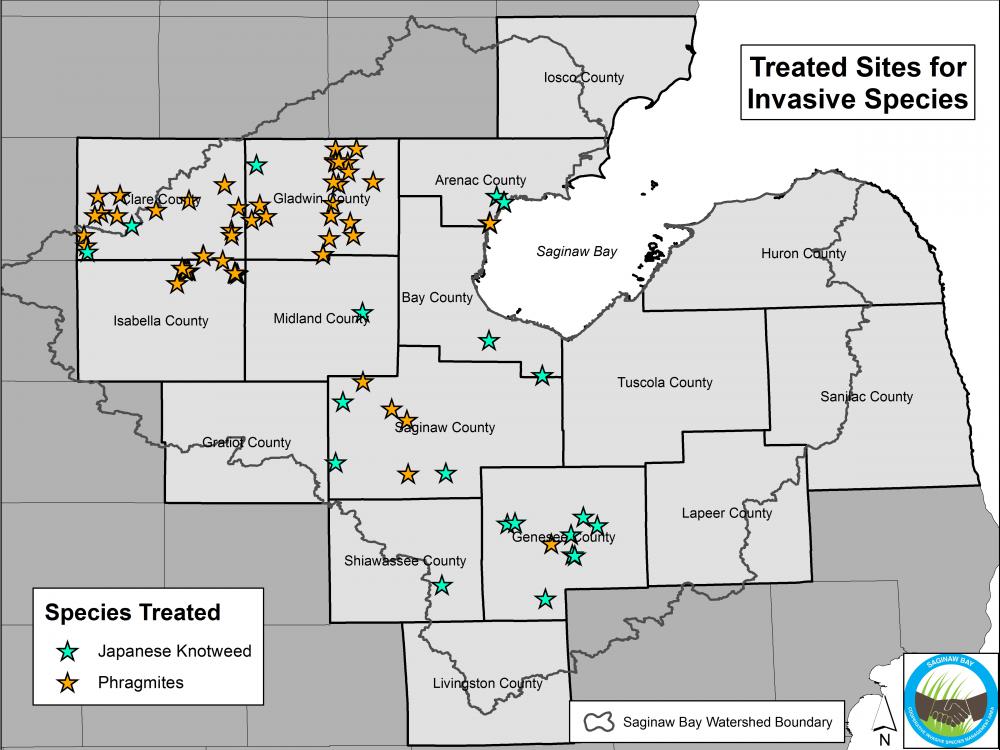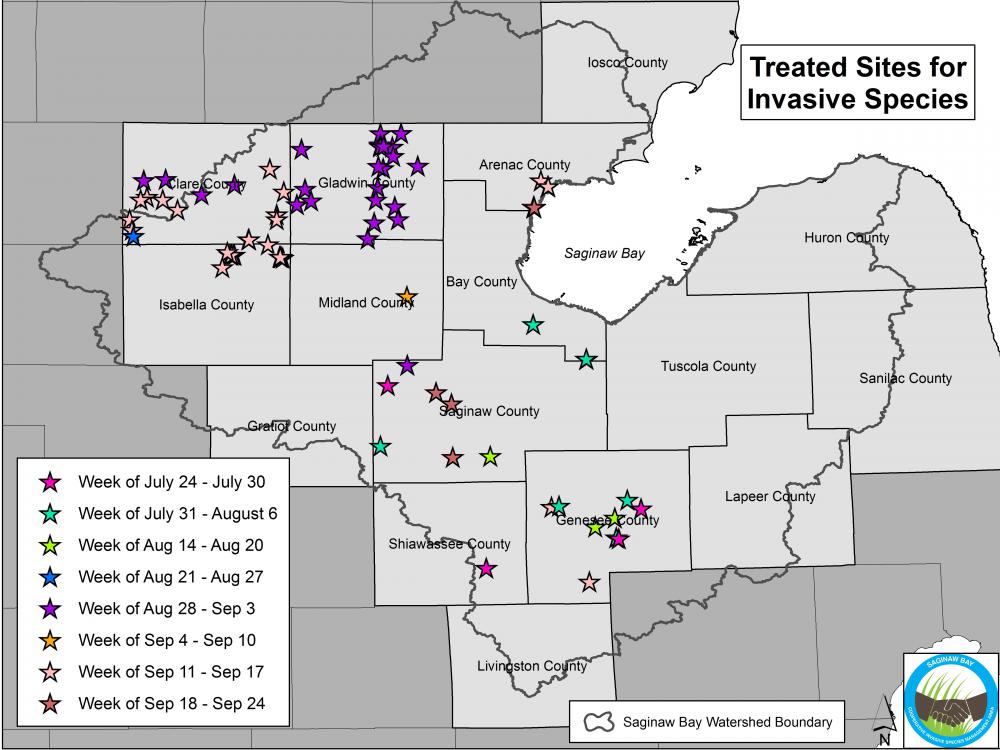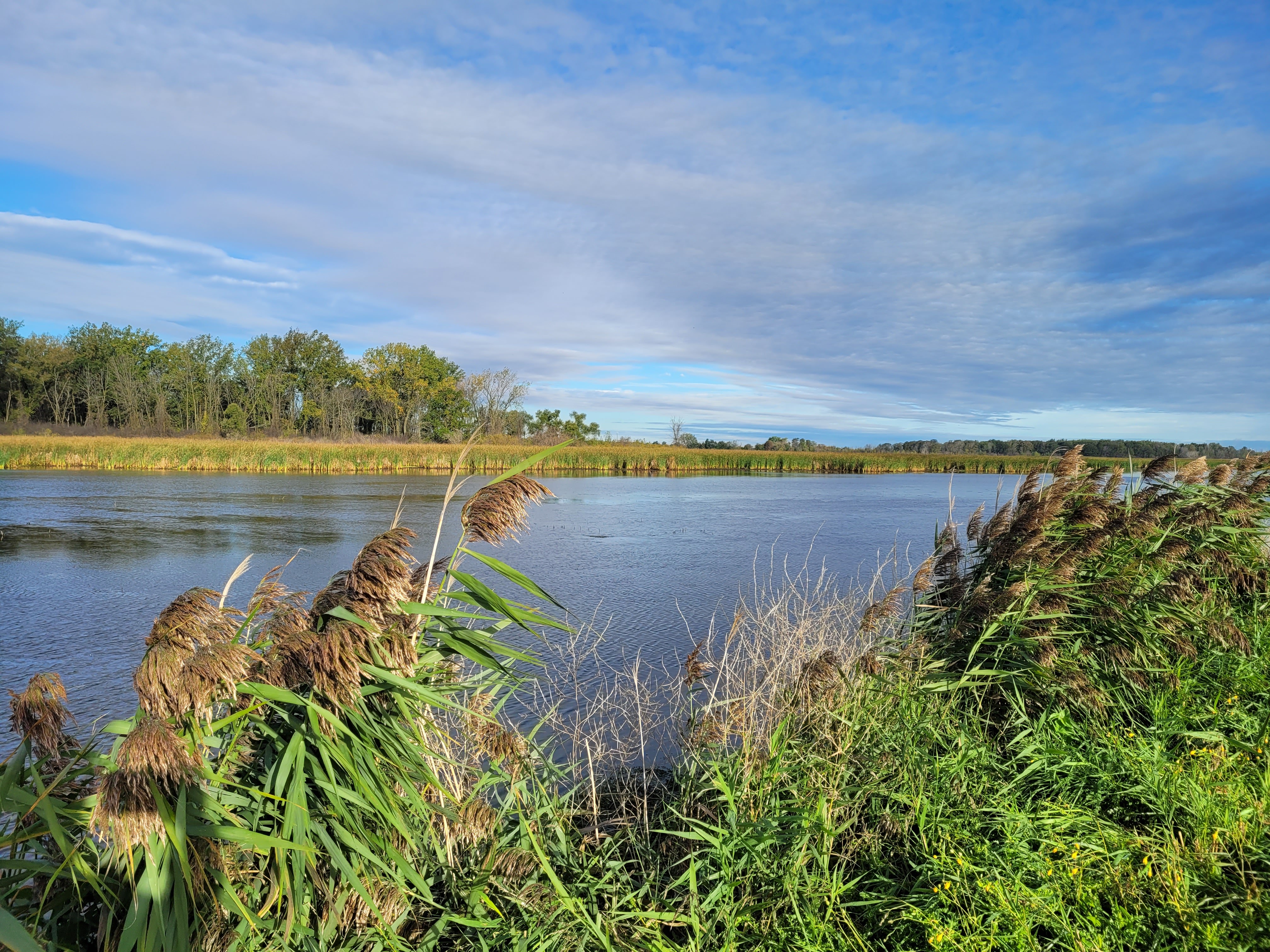
Stephanie Hoyle
Full Members-
Posts
38 -
Joined
-
Last visited
Content Type
Profiles
Forums
Articles
Everything posted by Stephanie Hoyle
-
I just read this article saying that a new Hydrilla species had been discovered in Massachusetts in 2023. Given we have just seen Hydrilla for the first time in Michigan, I thought I would post the article here to share. If anyone knows more about this, maybe add to this thread. https://www.masslive.com/westfieldnews/2023/12/new-species-of-hydrilla-found-in-middle-pond-of-congamond-lakes.html
-
Knotweed miracle?
Stephanie Hoyle replied to Elise Desjarlais's topic in Terrestrial Invasive Species
I'm curious if this knotweed ever ended up resprouting or if it is still mysteriously dead! -
I had a question about the Japanese Knotweed Treatment document shared by the SWxSW Corner CISMA at the top of this thread. I see that it shows Cygnet Plus by name as the surfactant for glyphosate stem injection. Would another surfactant such as DuoStick Select work for this or is it a pretty specific formulation?
-
I am currently in the process of trying to come up with a treatment acreage goal for a grant I’m working on. I want to be sure that it is something that my invasive species strike team will be able to handle and that we will be able to accomplish the goals I set! Is there a good way to estimate or a general rule for how many acres per-person can be treated in a month/year? We only have a small team of two or three. How would team size and equipment type factor in? More importantly, am I overthinking this? Thanks for your help!
-
Hi fellow CISMA Coordinators! As I am settling into the role of coordinator, I am finding that there are many, many moving parts to keep track of! I can see how it could become easy to get lost in the weeds (pun intended) very quickly if I do not have a system in place for gathering my thoughts and organizing my projects! Rather than spending hours on google trying to find the best solution, I thought I would check the collective for wisdom. Do you have a go-to project organization tool/visualization/ or template that helps you keep track of your projects and activities at a glance? Sincerely, Stephanie Hoyle
-
Arenac Conservation District is looking to hire one full time (40hrs/week) Invasive Species Monitoring Crew Member for a limited term position through August 31, 2022. Employee will be part of a 2-member crew conducting standardized monitoring activities for invasive species in Saginaw Bay Watershed. Activities focus on pre- and post-treatment of non-native phragmites in Bay County, as well as other invasive species within treatment areas. Compensation: $12.50-16.00/hour Work Location: Saginaw Bay Watershed, primarily in Bay County. Benefits: Mileage reimbursement and training; paid holidays Supervision: Arenac Conservation District Manager, SB-CISMA Coordinator Starting Date: May 2021 Qualifications: ● Must have a minimum one year of or have obtained a BS degree in a natural resource related field. ● Must have a valid driver’s license. ● Willingness to work a varied schedule. ● Ability to work effectively with co-workers and the general public ● Ability to lift and/or move up to 50lbs. ● Experience in field-based monitoring and statistical analysis preferred. Must possess or be able to obtain a Commercial pesticide applicators license. See attached posting for more information on how to apply. Questions can be submitted to Gadi Krasner at sbcisma@gmail.com Monitoring Crew Job Description 2020.docx.pdf
-
Update: 14 species added to MISIN website and smartphone app!
Stephanie Hoyle replied to Claire Peterson's topic in MISIN
Claire, when I reloaded the species catalog on my smartphone app I got an error notification for all of the new species. I tried uninstalling and reinstalling the app, but I had the same problem. Is anyone else having this issue? -
Hiring full-time temporary Outreach Technician
Stephanie Hoyle replied to Erica Clites's topic in Community News
Looking for 2 Full time (40 hrs/week) limited term position, through August 31, 2022. Apply by Feb 15. Please see the attached job description. Monitoring Crew Job Description 2020.docx (1).pdf -
If anyone would be available to guide me on how the SB-CISMA could get the ball rolling on posting billboards, I would appreciate it! I have a very large area and would like to advertise. PCG/AIS Boater/DMF/CDD included! Thank you!
-
The following species will be discussed along with reporting and decontamination. Phragmites Flowering rush Japanese knotweed Black swallow-wort Pale swallow-wort European frog-bit Oak Wilt Disease Hemlock Woolly Adelgid Asian Longhorned Beetle Thousand Cankers Disease Beech Bark Disease Balsam Woolly Adelgid Heterobasidion Root Rot Disease (formly Annosum) We hope to see you there! Register today at saginawcd@gmail.com. See attached flyers for additional information. Please share!
-
I have heard over and over that you should not treat invasive phragmites after the first frost. Does anyone know if this is true about phragmites and know the science behind it? I know that a lot of invasive species continue to grow after the first frost so I am just trying to find information about phragmites. Thanks, Kip
-
Finding / mapping / treating MISIN sites
Stephanie Hoyle replied to Stephanie Hoyle's topic in Mapping and Data
Hi Everyone! Thanks for taking the time to comment. We have started adding a little more information to MISIN when first reporting a site. If it is in the right-of-way we are adding ROW to our notes along with the direction for which side of the road. If it is on private property we are adding the address and the distance from the road. These will help us determine ownership in the future. These comments are being done for road surveys through our counties. On private property we would put the entire address in the notes. FYI -
Saginaw Bay CISMA - Strike Team 2016
Stephanie Hoyle replied to Stephanie Hoyle's topic in Success Stories
Here is the same map but it shows the species we have treated. All of these sites have also been entered into the MISIN Treatment Database. FYI -
Hi All, Like many of the other CISMAs we have a summer Strike Team that identifies, verifies and treat our priority species. This year has been our first real year of treatment and the team is doing a great job. We have backpack sprayers and a large truck sprayer that we use for treatment. Each week we post an updated treatment map on our Facebook page (www.facebook.com/sbcisma). Here is our most recent.
-
-
Please see the attached pictures of a variegated version of non-native phragmites that we found along the shoreline of Saginaw Bay. It was mixed in with a stand of non-native phragmites. A couple of years ago there was just one plant and this year there were about 8. We just wanted to share the pictures and information. FYI - Kip
-
The Lapeer Conservation District in cooperation with the Saginaw Bay CISMA is hiring a two-person monitoring team for two-years (1 full time and 1 part time position). The main focus of the job will be monitoring non-native Phragmites pre and post treatment within Arenac, Bay and Tuscola Counties. The position announcement ends June 8, 2016. The position description is attached to this post. If you have any questions please do not hesitate to contact me at sbcisma@gmail.com. Monitoring Crew Job Description.pdf
-
Knotweed treatments
Stephanie Hoyle replied to Katie Grzesiak's topic in Best Management Practices (BMP) and Treatment
Hi Katie, Thanks for all of the great information. Can you give me an idea on the dates you mean for "late spring"? Thanks, K -
Flowering Rush
Stephanie Hoyle replied to Stephanie Hoyle's topic in Best Management Practices (BMP) and Treatment
Here is a more reliable link: http://www.msuextension.org/invasiveplants/documents/mt_noxious_weeds/flowering_rush.pdf Sorry...

